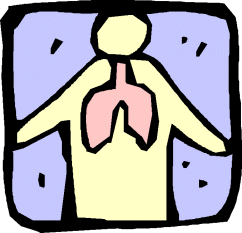|
Physiology |
| While there are a number of different modalities used to administer lung expansion therapy, they all have one thing in common: all of them increase the patient's lung volume by increasing the transpulmonary pressure gradient (the difference between the alveolar pressure and the pleural pressure). Given all else remains constant, the greater the transpulmonary pressure gradient, the more the alveoli expand. |

|
All lung expansion therapies use one of two approaches to increase the transpulmonary pressure gradient:
- By decreasing the surrounding pleural pressure (A spontaneous deep
inspiration increases the transpulmonary pressure gradient by decreasing
the pleural pressure.)
- By increasing the alveolar pressure (Positive pressure increases the transpulmonary pressure gradient by raising the pressure inside the alveoli.)
Incentive spirometry (IS) enhances lung expansion through a spontaneous and sustained decrease in pleural pressure. Positive airway pressure techniques do the opposite: they increase alveolar pressure. Positive pressure lung expansion therapies may apply pressure during inspiration only (IPPB), during expiration only (PEP and EPAP), or during both inspiration and expiration (CPAP).
Methods which decrease pleural pressure are closer to natural circumstances than those that raise alveolar pressure. Negative pleural pressures aids venous return to the right heart, while positive pressure can compress the lung's vascular beds, increase pulmonary vascular resistance, impede venous return, and decrease cardiac output.